The Real Market With Chris Rising – Ep. 46 Jon Pharris
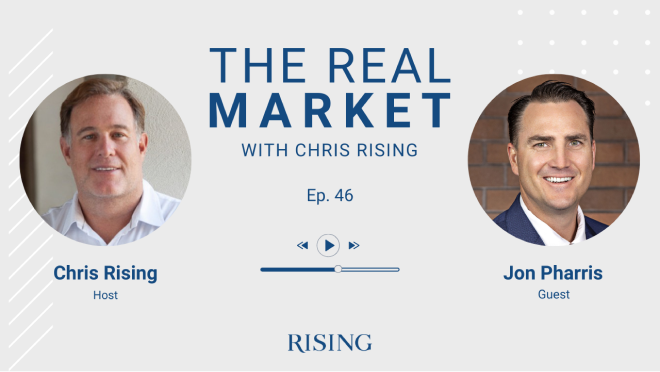
Chris Rising (00:02): Welcome to the Real Market with Chris Rising, the only podcast that brings the Real Estate Conference Panel to your headphones. You’ll hear from superstars from every realm of commercial real estate, the biggest brokers, the most well-known architects, the largest investors and the most visionary developers. You’ll learn what they do, how they do it, and what drives their success. We’ll discuss the latest trends across regional markets, capital flows both national and global, and we’ll explore technology’s role in shaping all of it. We’ll take a cleared eyed look at where we’ve been, where we are now and what’s to come. Real conversations, real experts, real insights. This is the Real Market.
Chris Rising (00:50): Welcome to the Real Market with Chris Rising, I’m excited today to have Jon Pharris of CapRock Partners, which is industrial focused real estate company. I haven’t really done industrial on the podcast yet, even though I spent a lot of my younger part of my career around industrial. So it’s nice to have a conversation with Jon. They are real leaders in industrial in the western US in the western market. And we talk about everything from Amazon and the future of industrial to what’s going on right now during the pandemic. We also get a little bit into the technology and databases they’ve built. I think you’re really going to like the conversation.
Jon Pharris (01:21): Well Chris, thanks for having me, excited to be here.
Chris Rising (01:28): I think it’s great to have you on. I have all these podcasts I’ve done, and with the roots that I have in industrial given my father in Catellus and kind of grew up going around industrial sites. You’re the first person I’ve had on who’s got an expertise and a real specialty focus on industrial, so excited to have you here.
Jon Pharris (01:46): Yeah, well industrial is definitely an exciting spot to be right now, especially given everything that’s going on with this pandemic.
Chris Rising (01:54): Yeah, we sit here at April 30th of 2020 and the world is still shut down. Here in Southern California, it will be for a couple more weeks at least. As you look at the asset classes that are out there getting crushed, it’s clearly hotel and retail, the office side where we spend our time is surviving. But the poster child right now is industrial. Could you give us just an update here at the end of April 2020 on your view of how industrial has fared over the last six to eight weeks of the pandemic and what you think the future is in the markets that you invest in?
Jon Pharris (02:31): Sure. So for context, CapRock focuses only on industrial. And within industrial, we have two platforms. On one hand we have a value add platform with discretionary funds, that is comprised of endowments and pension funds and institutional investors. On the other hand, we also have a development platform that is focused on large scale industrial developments on the West Coast. So, across our platform we see both middle market deals as well as large scale million square foot buildings that we’re building. So, we have a pretty good view into the marketplace and the tenants and what they’re seeing and what they’re experiencing.
Jon Pharris (03:10): Our viewpoint is when this pandemic passes, and it will pass, industrial real estate is going to be the most preferred asset class amongst all institutional investors because of a variety of factors. Some of those include just the simple fact of who these tenants tend to be. They’re often fortune thousand type companies that have very strong balance sheets. And oftentimes we have long term leases that are anywhere from five to 15 years. So, despite a pandemic or an economic recession or whatever might happen, oftentimes our leases are long enough and allow to ride through the turbulence. Obviously that is predicated on who the creditors, the tenant is and what industry they are in. And in this instance, if they’re really tied to hospitality or to retail, there still might be trouble spots.
Jon Pharris (04:04): Another thing that we think is going to be another tailwind for industrial is just the simple fact that everybody’s buying online. And eCommerce penetration across the entire US has spiked over the last six to eight weeks, and we don’t think that’s going to stop once retail opens back up and malls are back open and traditional brick and mortars and people going out. There’s been studies that simply show that once somebody gets used to buying online, they tend to spend more online and they get more and more comfortable with that. So, while the spike might come down, we don’t expect a significant behavioral shift back to brick and mortar. And eCommerce obviously benefits industrial real estate, whether that’s a small building or a million square foot building. Whether that’s out in the Inland Empire or that’s in a last mile logistics facility, there’s a whole bunch of demand drivers related to] eCommerce for industrial.
Jon Pharris (05:09): Another thing that’s probably going to happen, but it’s really too early to tell, is the possibility of any on shoring or near shoring in the Americas that could happen as companies already were getting … adjusting their manufacturing process not to only be in Asia. And we think that that re-shoring or near shoring is going to accelerate as a result of the Coronavirus. So, if that occurs, then there’s going to be another demand factor for locations that are close to Mexico or even to Canada. And then if there’s on shoring, states that have very low cost of capital and that have low tax bases, like Texas or Arizona or Nevada, states like that, are really going to benefit. I think that’s going to potentially push some more manufacturing back to the United States or to Mexico. It’s still a little too early to tell on that regard, but what we have already heard is that companies want more inventory. And that is another demand driver for industrial real estate.
Jon Pharris (06:19): So, if you look at the broad picture, usually they’ve … companies up to this point have only wanted inventory management systems, just in time delivery and as little inventory as possible to manage their bottom lines. But now there’s already occurrences where they want to have more inventory on hand in case of these shocks, and that’s just going to lead to more demand for bigger industrial buildings.
Chris Rising (06:42): So you’ve convinced me I’ve wasted the last 15 years of my life focused on office and mixed use. I think there’s some things I wanted to pull out just in the things you were saying. I have heard nothing but good things about industrial, but I have also heard a few issues as it relates to logistics companies and their relationship with retailers. Is that showing up in your assets that you’ve owned and developed, where there are some rental payments being missed because of retailers? We’re having major … First time we’ve seen major, major retailers that are imploding, whether it be Neiman Marcus and Saks, but quite a few others. Has that affected anything in your portfolio?
Jon Pharris (07:32): Fortunately not at all in our portfolio because we do not have any 3PLs or companies directly leased to the retailers that are struggling. Fortunately our portfolio is very, very light on retail oriented tenants, so we haven’t had that same issue that other groups have had. And that is just luck. There is no … Going back three, four, five years ago, having a TX Maxx or a Neiman Marcus or a Macy’s would’ve been great. It’s just in today’s world, everything has changed so quickly.
Jon Pharris (08:11): The other thing that I’d say is that not all industrial’s created equal. People are saying that industrial is going to be the most resilient, which I definitely believe. But I think there’s going to be cracks in industrial real estate. And I think that there’s going to be sectors that have more stress than others. So, very specifically, I think what we learned from the GFC is that the smaller unit sizes that are predominately multi-tenant business parks that oftentimes have some of the backbone of the US economy and they’re more entrepreneurial companies and they’re often in less than 10,000 square feet, those types of companies usually don’t have very strong balance sheets. They often only have one location. And I think that’s going to be the segment of the market that’s going to be most impacted. And that’s the area that’s going to have the most stress.
Chris Rising (09:08): Let’s break down a little bit. Because I think when people think of industrial today, obviously the biggest name in industrial is Amazon and Amazon Distribution Centers. You’ve mentioned the term 3PL, third party logistics companies, can you break down a little bit about … You were talking about building million square foot warehouses, you were talking about doing smaller value add. But kind of give us the different sectors within industrial the way you see it and where does eCommerce people like Amazon fit within those different sectors of industrial?
Jon Pharris (09:39): Sure. eCommerce is prevalent across every single sector, whether that’s 100,000 square foot building or that’s a million square foot building. What we do, on our development we focus primarily on larger scale projects that are usually 400,000 square feet and larger. Right now, we’re under construction on [Colony 00:10:04] Commerce Center in Ontario, which is in the Inland Empire, which is the nation’s number one industrial market. That project is the largest spec construction in the United States, it’s three million square feet, over 11 buildings. Three of those buildings are bigger box, so all those three larger than 500,000 square feet, one of them is a million square feet. And then we have a variety of smaller buildings that are generally between 50,000 square feet and 150,000 square feet.
Jon Pharris (10:38): An eCommerce group would be able to occupy any one of those buildings, given its location in the Inland Empire, they’re going to gravitate towards the larger buildings. The 600, the 700 or the million square foot building. If that project was in LA, in Orange Country or in San Diego County where there’s very few bigger box buildings, it would be a smaller project, typically between 50 to 200,000 square feet than an Amazon or an eCommerce user would occupy. And it’s usually termed a last mile logistics facility. So, within industrial you see how an eCommerce provider can occupy any size of building, it really just depends on how close it is to the population center.
Chris Rising (11:29): Then a lot of people, they talk about Amazon and industrial, we think robotics and things like that. How is technology, especially, I look at industrial over kind of a 20 year window, I just have to imagine in the last five years that the industrial that I think of from 20 years ago is not at all what it is today. Can you talk about where prop tech and robots and Amazon’s influence has come in the industrial real estate sector?
Jon Pharris (11:58): Yeah. I think right now industrial real estate is on a wave of technological change. Up to this point, the buildings have been very generic and they’re really just four walls and a roof. The only thing that changed within those four walls and a roof for the last 50 years was essentially the clear height. So you maybe had a 16 foot clear height from your slab to the top of your roof and that allowed for the storage. And then slowly went to 24 foot clear, then 28 foot clear, 30, et cetera. And now most class A large scale buildings are a minimum of 36 foot clear and most are 40 foot clear and above. But that’s really been the only change.
Jon Pharris (12:44): However, with eCommerce, it’s pushing a lot more technological change and a lot more focus on what’s going on into the building, such as power, such as super flat floors. What that means is that a flat floor allows for MHE equipment, mechanical handling equipment, to be more uniformly placed throughout the building. It also allows for electronics and robots to roam a lot easier. Then within these industrial buildings, you’re also now seeing mezzanine throughout parts of the building. And that’s really an advent by eCommerce users who are looking at buildings differently than they’ve ever looked at industrial buildings before.
Jon Pharris (13:30): So, instead of it just being focused on what your clear height is or what your square footage is, now companies are looking at what the cubic footage is. How height is the clear height? Can we maximize that? Can we go instead of 40, could we go all the way up to 70 foot clear? Can we have what’s called a G plus three, which is what Amazon is pushing in a lot of their buildings. A G plus three is very simply ground floor and then three levels of mezzanine. And sometimes those mezzanine decks are the entire length of the property, other times they’re only partial mezzanine. And then within that, they’ll have different levels of robotics. So, sometimes they’ll have robotics throughout the building or only on partial floors. And that trend has really accelerated over the last 36 months.
Jon Pharris (14:21): As you look at of what is to come over the next 10 to 20 years, we think across the board there’s going to be more technology in these buildings. There’s going to be more need for power. And there’s going to be more robots that are involved from unloading the trucks as they come in off the ports into the buildings, everywhere around the buildings, sorting within the buildings themselves. And then repackaging and going back out to delivery to retail stores or wherever their end location’s going to be. That’s just going to create more and more demand for technology and for these buildings to be future proof.
Chris Rising (15:03): What I find interesting as I hear you describe all of this, it makes me wonder with all the amount of square footage that has been built in industrial over the last 20 years, are there patches of functionally obsolete industrial buildings because Amazon has moved things so much and things have changed? Or are we not at that point yet?
Jon Pharris (15:25): For my prism, I focus on the West Coast, so that would be how we look at things are very dense areas. So it would be all of California, the Pacific Northwest, Arizona and Nevada, that’s our target market. There certainly seems to be pockets of unused industrial in the middle of the country in certain areas where populations have been declining and demographics have changed. In our markets right now, going into … Let’s say at the end of 2019, our markets were nearly as strong as they’ve ever been and industrial nationally was at the almost at it’s all time low vacancy rate. So, in the Inland Empire alone, there was approximately 18 to 20 million square feet of new construction that was taking place each year over the last three or four years. Despite the fact that 18 to 20 million square feet on average had been delivered, vacancy was still declining because we had so much demand that we couldn’t keep up with building new buildings. So that’s a very unique demand driver, that there’s just so much demand that up until the recent events of COVID-19, as soon as we were building these buildings, they were getting leased.
Chris Rising (16:51): That’s amazing. Well, probably the biggest deal of the year last year was an industrial deal between Blackstone and GLP. What was your take on that? I mean, Blackstone has come in and out of the industrial market, but what was your take on that big exit that our friends over there had?
Jon Pharris (17:07): Well, oftentimes Blackstone has timed the market, especially for industrial, incredibly well. They’ve had pretty phenomenal success in the industrial sector in every single platform that they’ve been in. Whether they’re good or they’re lucky, it’s hard to tell. But they’ve had great outcomes. And GLP, they’re obviously one of the largest groups globally for industrial, so it’s great to see the level of competition in industrial continue to get stronger and stronger and more thoughtful as they approach their investments.
Chris Rising (17:55): Okay. That was a politically correct answer. At the end of the day, I think GLP had a good exit there. So let me ask you this, how does a guy who went to Princeton and then USC for your [MRED 00:18:13], not really what I would think of as … My traditional kind of thinking of an industrial guy is someone wearing jeans and work boots and a shirt with paint on it as they go out there and look for deals to buy and transact. What brought you into the world of industrial real estate?
Jon Pharris (18:33): I am definitely not the typical stereotype, but my background was similar to yours, in that I was raised in a real estate family. My family was much more on residential. Quick story is that my grandad started a sand and gravel company after World War II. And that, as the nature of sand and gravel, needed to have a lot of aggregate, needed to actually have the rocks and the sand and things like that in order to mine. Fast forward about 50 years and my dad was running the company and he sold the operating business to CMEX, but kept a lot of the land. And at that time, the operations were mostly out in the Inland Empire in Southern California.
Jon Pharris (19:18): When they sold it, they had several thousand acres of land that they retained and they sold the company when I was 12 years old or so. So, I had not context of sand and gravel and what those operations were. But once I started growing up and being more aware of businesses as a teenager, everything revolved around, “What are we going to do with that land? How are we going to monetize it? How are you going to title it? What’s the process going to be?” And those were the types of conversations we had every dinner, every Christmas, every Easter. That sort of permeated our lifestyle.
Jon Pharris (19:49): So, the only two things I really thought of doing when I was growing up was Wall Street or real estate. And I worked at Merrill Lynch one summer as an intern when I was at Princeton and realized that Wall Street wasn’t for me. So, I defaulted into real estate. Unlike you Chris, I never found retail or mixed use or office buildings all that appealing, it just wasn’t in my nature. I was much more interested in industrial buildings from the beginning. And my wife, who I’ve been married for 18 years now, she jokes that she never is concerned when another girl walks by, but she’s petrified to get in the car with me when I’m on the freeway because I’m looking at all these industrial buildings all the time. That’s just been my groove.
Jon Pharris (20:40): So, when I graduated Princeton, I was one of the few people of my friends who didn’t immediately have a job or who wasn’t going into consulting, who wasn’t going into Wall Street. I moved back to Southern California and started as an industrial real estate broker selling and leasing buildings in Orange County. And then one thing led to another.
Chris Rising (20:58): What firm did you start with?
Jon Pharris (21:00): Oh, I started with Lee and Associates in Newport Beach.
Chris Rising (21:04): Oh, wow.
Jon Pharris (21:10): So, it was a great-
Chris Rising (21:10): And some-
Jon Pharris (21:11): It was a great opportunity. Because they’re, unlike some of the larger national shops at that time, in 2002 Lee and Associates was definitely not national. They were really focused mostly in California. But there wasn’t a training program, there wasn’t a wheel program. There wasn’t really a lot of background and training. It was much more of a, “Here’s a phone, here’s a cube, dial for dollars and sink or swim.” And I tended to thrive in that environment and hit the streets and stared knocking on doors and literally walking every single building. I started to create a network and found I was fairly good at it.
Chris Rising (21:47): I always love hearing … I started as a broker too, a lawyer and then a broker. I think it’s a different mindset, if as a young person you can learn how to live on a commission only basis, I think it sets you up well to become a principle. I’m always interested in the founder’s story and the entrepreneur’s story. You founded CapRock in 2009 along with your partner Pat Daniels. What was the evolution, if you were graduating from school and then you got your MRED, what was kind of the thing that said, “Okay, I’m going to move from a broker to a principle.” What was that step?
Jon Pharris (22:22): Sure. In between brokerage, I went from brokerage to USC, got my MRED degree, the master’s in real estate development. And then started working at a value add shop that was focused on mostly industrial and office in Southern California, and then got hired away by Jeff [Thaylen 00:22:45], who started Thaylen Development Company. Jeff was the partner for [Panatoni 00:22:51] for Southern California. So approximately 20 million square feet he built between early ’90s to 2007 or so, was all under his purview at Panatoni. And then he started Thaylen Development and I joined him really right when Thaylen Development opened its doors.
Jon Pharris (23:12): We had a great run there, I was the development manager, focused on the Inland Empire, sourcing, entitling and building industrial buildings. Anywhere from 50,000 square feet to 500,000 square feet. And I really want to be able to say, “We saw this vision and it was a great time and that’s where we started CapRock Partners.” But what really happened was the GFC. In 2008 the world stopped, development stopped. Across the board, whether you were a large company or a small company, everything changed, what felt like over night. And I saw an opportunity to buy great assets at pennies on the dollar. I was 29 at the time and saw this great buying opportunity that you only read about in books and you theorize when you’re at school. And you just wish that, “Gosh, I wish I was there at that time. Wouldn’t it be great?”
Jon Pharris (24:08): So, that’s where I found myself when I started putting together a business plan that became the basis of CapRock Partners. There’s a third partner between Pat and myself, and that was my father, Jerry Ferris, who is Chairman of CapRock. And he simply said, “Jon, you’re a smart guy, you have a lot of passion and motivation and you can dig up deals. But at 29, you can’t run a large scale company.” And he had previously invested with Pat Daniels when Pat was at another company focused on industrial. The three of us came together. Jerry, with more relationships and a little bit of capital, and then Pat and I ran day to day. Pat’s background has been all institutional, from Trammell Crow, to Hillwood, to helping companies expand nationally. So, that’s been his mindset. And I’m much more of an entrepreneur and, “Let’s go out and create opportunities.” And the marriage between really Pat and I, has been fantastic with key guidance by Jerry.
Chris Rising (25:19): Well, it’s an interesting story. I think in real estate, unlike tech and all, but you’re in tech too, having some of the gray hairs, having people who have been through a cycle or two before you is really helpful. But at the end of the day, the deals only happen if you’re hungry and motivated and you can find things. Talk a little bit what you have done since you started the company. You’ve had some really first rate institutional partners, but talk about how you went from deal one to where you are now. What was the progression and the growth of CapRock?
Jon Pharris (25:50): When we started CapRock, it was literally just Pat and I dialing for dollars, dialing banks. I look back at that, I’m sitting in a cubicle making cold calls just like I was a broker, but to a different audience. I had my script and things I was creating in order to get my foot in the door. I think one of the best things that we ended up doing, was naming our company CapRock Partners. Because it sounds like an institution, even at the time we were just two people trying to create opportunities. And we’d leave messages with whatever bank it was, because we were targeting nonperforming loans and REOs and bands like that, all secured by industrial properties.
Jon Pharris (26:36): And I remember getting calls back like, “Oh, CapRock partners. We know you guys.” As if they thought we were like Blackstone or Oaktree or whatever. Right? And I was thinking to myself, “There’s no way you have any idea who we are.” But hey, we had a great name and then that created the opportunity in order to get those meetings. And once we were in the meetings, we just had to close them and succeed and show them why we were the right guys. So I think that was a unique experience.
Chris Rising (27:04): Well, talk a little bit, because it doesn’t sound like even with this pandemic and the horrible unemployment we’re having and all of that, it doesn’t sound like you think or it feels like industrial will have the same experience as it did after the GFC. But talk about what it was that you were looking for when you were buying notes. I mean, there’s a skillset to buying notes and getting to the property and foreclosing. Talk a little bit about what that experience was like and what you were really trying to zero in on, in 2009, ’10, ’11, so the audience can understand a little bit of how this entrepreneurial bug built a big company.
Jon Pharris (27:46): Sure. So, what we did, was look at everything that was acquired between roughly 2004 and 2007 that was industrial. And then we started putting together our own proprietary database and targeting properties that we knew were going to be underwater, given the change in valuations. And then we started segueing that into which ones were institutionally owned, which ones were privately owned? Which ones were at major banks, which ones were at regional banks? Which ones were occupied, which ones were vacant? And started creating our own stress levels in our own database, so that we knew what assets to target and where we had the highest probability of successfully getting in front of a decision maker. Because it’s much different for a younger company to target a regional or local bank, than it would be for us to target a national top five bank. So, we specifically targeted smaller banks where we would have relationships or where we could create relationships, where there wasn’t levels of bureaucracy. That was a very intentional act by us.
Jon Pharris (28:52): Another thing that we did was because of our database that took an incredibly long time to build and sort given the fact that there’s two billion square feet of industrial in Southern California alone, we started calling the banks. And instead of saying, “What industrial loans do you have that are secured by industrial properties?” We would literally call the bank up and say, “I know you have a loan on 123 Main Street, I know it’s in default. I’m going to buy it for X.” And we would tell them to their face. So many times we were told, “Oh, we actually don’t have that loan, it’s not showing up in our workout schedule.” I said, “Well, you will. And maybe it’ll be in 30 days or 60 days, but it’s going to come. Soon as it comes, give me a call.” And then we would check in with them, and sure enough, “Oh, we just got in our workout group, the loan secured by 123 Main Street.” And we were oftentimes ahead of where the banks were because of our database. And that put us up pretty well for success at that time.
Chris Rising (29:52): I love hearing stories like that, where you were thinking where the puck was going to go, instead of where it was. Let me ask you this though, as you look back at that period of time, what lessons did you learn that you took into as you started to get ownership of these assets? I mean, was it purely something as simple as people were just over-levered? Or did they pick the wrong tenants? What were the basics of why these loans were going into workout at that time?
Jon Pharris (30:21): Well, I would say a lesson learned for us is that we as a company hate leverage. We still use it on every single asset, but we use it very sparingly. So, even amongst our institutional partners, our typical loan to cost when we acquire a property is around 55%. Sometimes it gets up to 60, depends on the characteristics of each deal. But that’s it. And when we do development deals, it’s even latter leverage. And the reason behind that, is because of the experience that we had, where we were on the … We benefited from the over leverage of a lot of groups when we started our company because we were buying these defaulted loans.
Jon Pharris (31:04): But we never want to get ourselves in that situation. So we have passed on a lot of deals, especially the last I would say 18 months or so, when it was very difficult for us to make sense of some of the valuations. We are much more real estate people than we are finance people. So we look at the real estate first and then we’ll put on some modest leverage. Whereas I think that there’s been a lot of people, especially recently, that are more finance people and real estate second. They view things differently than we have. I would say that’s a lesson learned.
Jon Pharris (31:40): Then to another large degree is we’ve set up our company independently with these two platforms. We have a fund platform on one side, where deals typically on funds are crossed. And that has a certain risk reward and overall IRR profile. And that’s one segment. And then the other thing that we have is independent [JVs 00:32:08] on the development side. At our core we’ve value creators, so that could be creating value with you buying a nonperforming asset and transforming it. Or it could be by creating value out of ground and creating a building. But we wanted to keep both segments of our company independent of each other with different PNLs. Because at some point development’s going to slow down and stop. Maybe that’s right where we are right now. And we wanted to make sure that we are creating a company that had strong foundations that could last through multiple cycles.
Chris Rising (32:46): How big is your company today? How many employees do you have?
Jon Pharris (32:49): We are just about 30 employees. Most of them are in our offices in Orange County with several of them on site property managers at our projects.
Chris Rising (33:04): So you’re vertically integrated, you do property management. Do you do construction management as well?
Jon Pharris (33:09): Correct. We do everything from soup to nut. So, acquisitions, asset management, property management, all reporting, we have development managers. But in every instance when we do a development, we hire a third party GC.
Chris Rising (33:25): Very much like my company, just in a different space. Well, let me ask you this, I love the stories about two people in a cubicle and building your database from the beginning, which I would assume is probably something on an Excel spreadsheet or something. But talk about how you have used technology to grow CapRock and what’s your infrastructure? I’m also curious, are you a Google backed system, a Microsoft backed system? How do you all use technology and how have you used it to grow?
Jon Pharris (33:53): We are a Microsoft backed, or use Microsoft Office on everything. Given this environment right now, we’re completely remote. That’s been great because of the technology that we have. But I also every summer go up to Idaho for a little bit and I have been able to work remote there for years, which has been good. But we are still a very low-tech industry. Industrial is still very low-tech, especially compared to lots of other asset classes. I would say that the biggest things that we are using to leverage technology is Yardi, which probably has the largest market share in real assets. It makes life a lot easier.
Jon Pharris (34:37): But then from a construction standpoint and a leasing standpoint, we use VTS, which is for leasing. And that way either our capital partners or all of our asset management team can see immediately what’s going on at every single asset and every single lease, which has been very effective and speeds up the process for the RFP to lease finalization. And then Honest Buildings, which is really for asset management, construction management, and development projects. Those would be the three key parts.
Chris Rising (35:09): Yeah, we use the same. Honest Buildings is now a pro core product and we love VTS, same reasons. How about just Zoom? Are you feeling the Zoom fatigue that I tend to feel by the time 3:00 or 4:00 hits in the afternoon of working remotely? Has it turned into one endless Zoom call for you, or have you all not needed to have that video piece to everything you’re doing?
Jon Pharris (35:35): It is definitely a combination of Zoom meetings every day and getting in front of people, whether that’s LP investors that are anywhere usually for us in the United States, and a lot of them in the major cities, not in Southern California. So, we’ve had a lot of Zoom calls with investors both for people looking to invest in our funds, but also current investors getting an update on what they’re going on in their portfolio. And then we use Zoom to manage all of our teams, our acquisition side, which I run. And then asset management side, which run. So, I use Zoom for that. But I would say that while we’re still pretty effective, I’m ready to get back in the office.
Chris Rising (36:17): That’s good to hear. I mean, I was going to be a little self-serving and ask you about that. I mean, our team has been very effective using Zoom and these kind of meetings. I believe, because we’ve got a great office culture, we’re always using technology. But I always felt that you needed to have a home base, you needed to have a brand identity, you need to have a club house to have Zoom be effective. So what I’m hearing from you too, is that while we can all function in this stay at home world, to build a team and to build a culture, having a home base is important.
Jon Pharris (36:51): Absolutely. And it also reflects who you are as a company. What is your brand going to be? What does your office space look like? Are you siloed in independent offices? Are you in … Well, pre-COVID-19, are you in open air cubicles, which is how we are. We don’t have any private offices. I’m in the middle of a bullpen with the acquisitions team. And I can throw a football across our entire office and hit pretty much anybody that I want. I can listen to people’s phone calls when it’s business-oriented and say, “Hey, let’s go target that deal quickly.” Or, “Maybe you shouldn’t have said that.” So we can use it as quick training all the time. And then we have lots of break out rooms so people need to break out to need a focus time or need to make personal calls, they’re able to do so. I love that environment and I’m missing that of the last 45, 50 days, whatever it’s exactly been, not being able to interact with my team the same way.
Chris Rising (37:49): Well, I agree with you on that. I think we’ll have some changes around the edges, probably have some plastic shields and all that. But I think if your culture is really about communication and comradery and creative collisions, it’s pretty hard to ever go back to an office world. But let’s break down a little bit about your … what is your view of how you create a great culture for a company?
Jon Pharris (38:14): The first thing I would say is transparency. Everybody that is on our team knows what we’re doing and why we’re doing it, where we’re headed and what our goals are and what our strategic plans are. So that everybody knows why they are important and why they’re valued and how every day they do something contributes to something larger than themselves. So that’s something that we talk about, I would say incessantly. And then every Monday morning, we have an all hands on deck meeting. If they’re traveling they can call in. That’s typically an hour to an hour and a half, where Pat Daniels, my partner, talks about maybe one of our core values or kind of a life lesson. Because he’s 57 years old and he loves mentoring people, so it’s a great complement. And then we then go through every single deal in front of every single person and say, “This is what’s happening on this asset, this is why this one’s working, this is what’s going on with the lease, this is somebody that’s dragging.” Or anything that might be happening from an entitlement perspective. So every single person knows what’s going on.
Jon Pharris (39:28): And then we have intentionally not micromanaged. We want to hire people smarter than their role needs to be, so that we can give each person their own autonomy and give them goals, give them direction, but let them connect the dots and succeed on their own. So, we’ve created little entrepreneurial environments within our company.
Chris Rising (39:52): As you’ve grown, we’re about the same size companies, are there any lessons learned that you have around hiring and firing and those kind of things? Kind of the nuts and bolts of running a company, which is different necessarily than finding a deal and financing a deal. What have you learned about the process of … you have your culture, but really managing a team?
Jon Pharris (40:17): Our focus has been to hire very slowly and very methodically. And some people have literally been on year long interviews where we’re thinking we need to role fill that we’re creating something and we’ve targeted people. Sometimes they know and sometimes they don’t know that we’re targeting them or wanting to understand how they would fit into our culture. I would say that intentionality before hiring has proven to be very helpful for us. And then we also try and hire people that we know. People that have common connections, people that we know the relationships that go very deep. Because then we understand their values and their work ethic and we have much better insight into who we believe they will be when they’re entering the office, so we’re not flying blind.
Jon Pharris (41:10): One thing I think that we should have done better is, been quicker to let under performers go earlier and let them transition. Because when they’re under-performing obviously it hurts the whole company. But oftentimes there’s a root cause within themselves. Maybe they don’t like the company, maybe they don’t like the role, maybe they want to be doing something different. And then there’s just this strange tension that exists between the company and the employee, where neither of them really want to be there and nobody really necessarily wants to make that move to fire or to let somebody transition into a different company where they might thrive. And I think that just as the company has aged and we’re wiser, we’re able to see that quicker. I’m hopeful that in the future if we have employees who need to move on to something else, that we recognize it quicker and we have the foresight to act quicker than we have in the past.
Chris Rising (42:13): I mean, I like everything you said. Maybe it’s just because we both share a YPO connection, the hire slowly and fire quickly is definitely a theme coming out of YPO. This is the first time in history where we have four generations really in the office, where you have baby boomers, gen Xers, millennials and gen Z. Are you seeing anything about … specifically within industrial real estate … about having those four generations there, about how things get done or tensions it creates? What are your thoughts about just you look at the 22-year-old to the 60-year-old all trying to get something done. How does it look in your company?
Jon Pharris (42:58): I would say that the … I’m much more of the rabbit in the equation of CapRock, and I’ll put it in that way. My partner is more the tortoise and very deliberate, dot the I’s, cross the T’s, engineering background. And I am much more on the entrepreneurial, create the deal background. And I bring that up because you look at our staff, I would say almost every single one of those people fall into one of those categories. They’re either the let’s be deliberate, let’s be slow and methodical. And then the other side is let’s go and create. And we have to have both groups, regardless of age, whether they’re 20 or they’re 60, in those camps. Because you can’t just be constantly going forward and not have anyone looking at your back making sure all the pieces fit together appropriately. And then if you only have people who are risk averse and putting together the pieces, then your company doesn’t thrive in the right environments and doesn’t create what it could.
Chris Rising (44:04): Yeah, I think that’s a good way to put it. Let me ask you this, we’ve talked all about business, little bit about YPO. Tell us a little bit about your family. You there? Oh, sorry.
Jon Pharris (44:21): I live in Orange County, been married for 17 years, got married one year out of Princeton and now have four kids. So, for a little while it was complete chaos and I mean that in a … usually in a joyful way. Our oldest was still five when our youngest was born. So we had no twins, but what that means was that we had four kids who were five or younger. And I look at some of our pictures and we’re having two kids in strollers and I’m carrying one, and we have another kid kind of falling off the stroller. No wonder we got so many strange looks whenever we went to Disneyland or walking around. Because it was kind of chaotic. So I’d say there was times where I was so tired because you’re trying to create a company along with the team and your partner. And then you come home and your wife is creating a family and it’s just … you’re exhausted on both fronts. But looking back, wouldn’t change it.
Chris Rising (45:27): Do you find it difficult to, especially in this work from home environment, to mix having the kids and work and relationship with your wife? Do you have any special secrets for how we all get through this?
Jon Pharris (45:42): I want to say I do, but I don’t. I think the only way we get through it is getting back to the office as soon as we can. I am fortunate to have a separate office, so I can close the door and I can say … I have my times of my calls. But it has different been different. One thing that I’ve experienced is that I’m actually at work earlier here than I am when I go in, in the office. Because I don’t have to deal with the commute. So I end up working more from home, than I do when I’m in the office. Because I start earlier and then I don’t have to commute home and I can just take a few steps and I’m back with the family. So, I don’t have any great solutions.
Chris Rising (46:24): Yeah. One of the things I’ve been thinking about lately is we also have an 8:00 AM Monday meeting that has always been so important that I think we may just keep as a Zoom meeting. Because why have people stuck in traffic? I think we’ll be much more deliberate about having times that we’re expected to be around the office so that we can have creative collisions. But until school gets back, I think people are going to be a little disjointed. But once school starts, I think we’ll get more into our routines again. I’m a little pessimistic that we’re moving into a Jetson’s world, I think people will want to get closer to what was normal, even though I think it will be different, what was normal.
Chris Rising (47:07): In thinking about that, I mean it’s an unfair question given we’re only at April 30th, but I’m going to ask it anyway. What do you think is going to happen in the industrial world, specifically in the Western US, over the next six months to a year or two? Are you chomping at the bit for opportunities? Do you think things will kind of plug along? What’s your thought?
Jon Pharris (47:32): I think that just as a matter of math, valuations have to change. Because we’re in … while it’s not a banking crisis, the banks are adjusting their underwriting criteria literally overnight. So, the loan pullback and proceeds will directly impact valuations. So, if you were a borrower and you thought you were going to have a 65% loan, you pretty much now have a 60% loan. If you were at 60%, you pretty much now at 55%. And equity returns. In an environment of uncertainty, equity investors want higher returns, not lower returns. So you have this double effect of lower loan proceeds and higher investor expectations, which clearly translate to a reduction in values. And then if you factor in any kind of NOI decline, which depending on your product type, some are going to be more in distress than others, you’re going to get hit with another level that’s going to put pressure on valuations because your NOI is not going to be there.
Jon Pharris (48:37): So, I created a matrix that I sent out to our acquisitions team. It says, “Look, here are probable scenarios, not certain scenarios, of what happens to values at 65%, what happens if that loan is now a 55%. What happens if your rate was at 4% and now it’s at 6%,” in all these different sectors. And then layered on what happens if NOI changes 5%, 10%, 15%. Just so everybody had a very clear dashboard of what could happen. I’m not saying it’s going to happen, but I want to be able to inform people on the front lines when they’re talking with brokers or they’re talking with potential sellers, of really how the whole finance picture works and how that impacts their values and how we need to make offers.
Jon Pharris (49:21): We’re still very optimistic on the industrial segment in general. We’re still leaning forward, we’re still making offers, we’re still closing on properties. We’re closing on a property in May, going nonrefundable on another one. So, we’re still very much leaning in. That being said, values will decline in our view, so we’re also pruning. So, some acquisitions no longer make economic sense in light of everything that’s changed, so it’s better to face the music today and either restructure the agreements, or in some cases you have to walk away from deals because you have a fiduciary to your investors. And you just got to make the right logical economic decision.
Chris Rising (50:03): Yeah. I agree. I think that’s all very well-said. I think the most important thing that I think and want to get your view on, we need to get past the fear of the pandemic. And I think that’s really where we’re still at, even though it’s been six or seven weeks. And then we need to, once people can have somewhat of a life, I think we’ll have a better view. But, because we’re still in the midst of the pandemic, have you seen any forced sales coming to market or heard of defaults that the market doesn’t really know about? Has that even shown itself yet, or is it too early?
Jon Pharris (50:43): In industrial, it’s generally too early. Because most groups, a lot of companies made their April payment and we’re not even at May 1st yet, we’re one day away. We expect there to be higher delinquencies, just like everybody else does, in May and in June visa vie April rents. That being said, it’s just too soon. And then with the CARES Act legislation and essentially the six month kick the can down the road on the banking side where they don’t have to report any kind of delinquencies, I think that’s just going to push out any kind of default until the end of this year or first quarter of 2021. So I think that we’re just in this, a little bit of this waiting game.
Chris Rising (51:31): Well, thanks Jon, I really enjoyed that conversation and appreciate you educating us on where we are today in industrial and where we are going forward. For those that want to follow CapRock, you can find them on LinkedIn and they also have an Instagram account. For those who are interested, I’d really love to have you subscribe to the podcast. You can find it on Apple iTunes, or any of the other podcasting platforms. Don’t forget to subscribe and people follow me on Twitter @ChrisRising, or go to my blog, ChrisRising.com. Thank you so much.
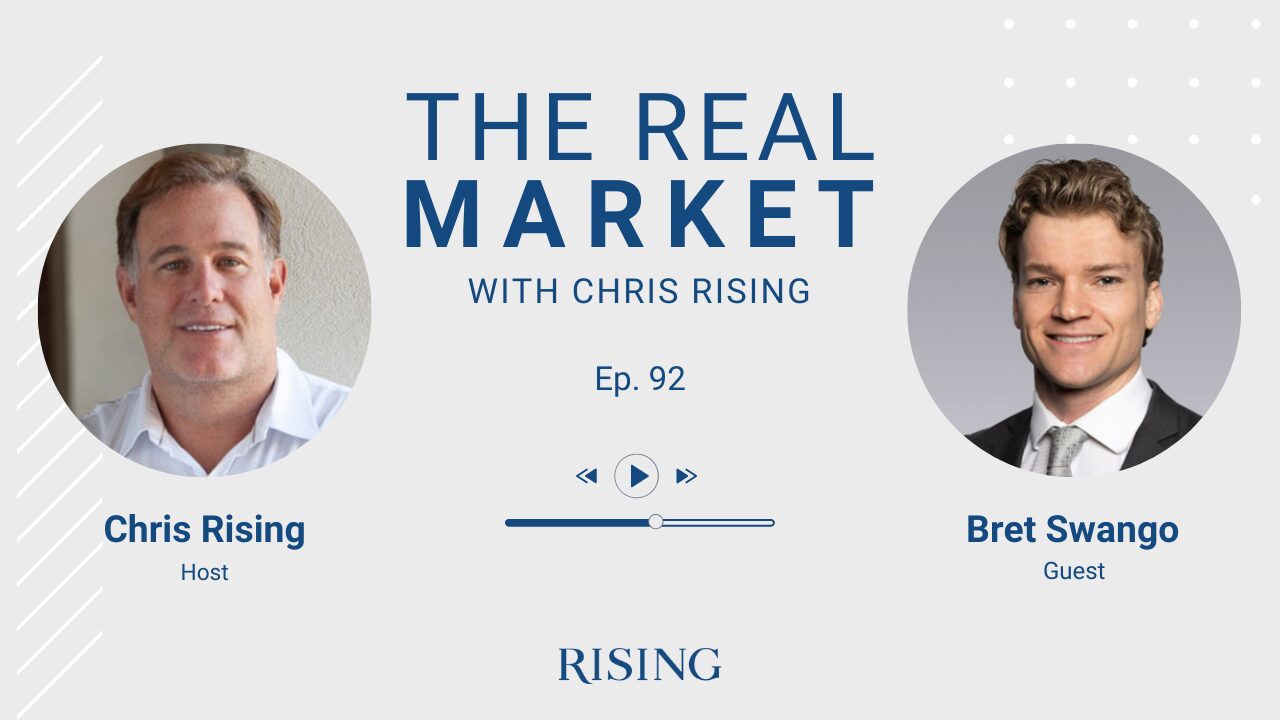
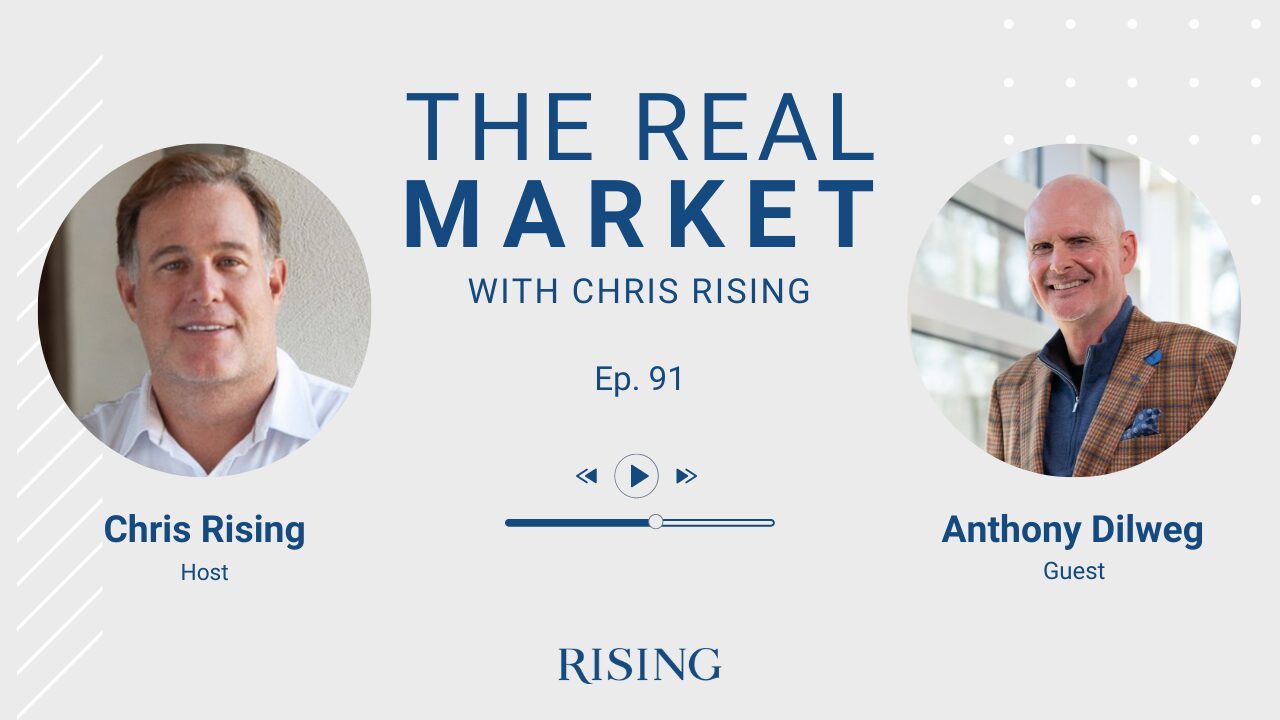
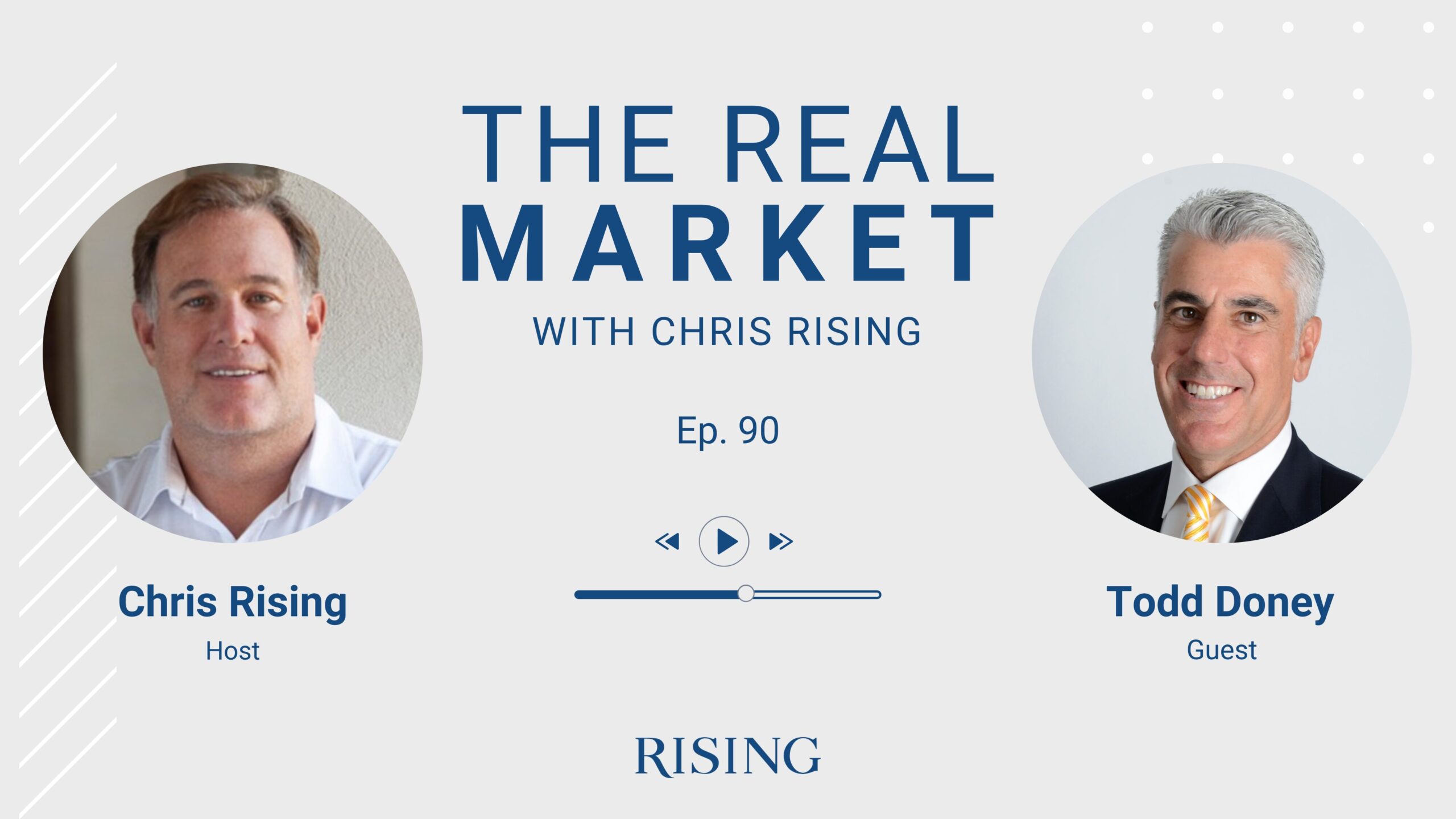
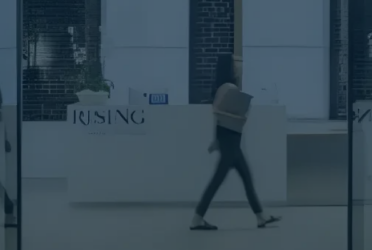
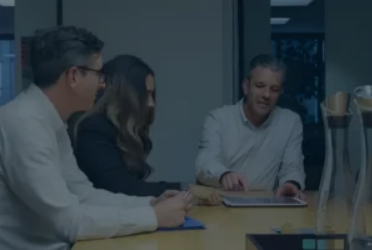
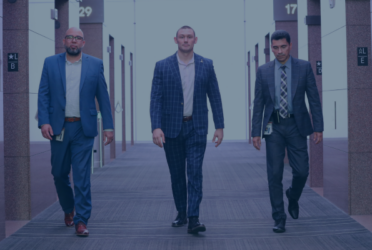
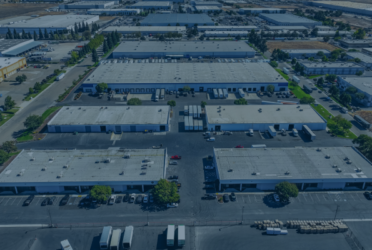
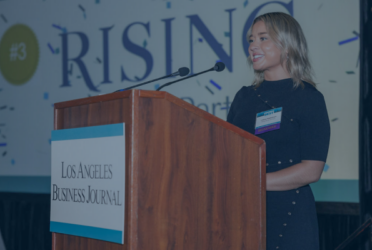
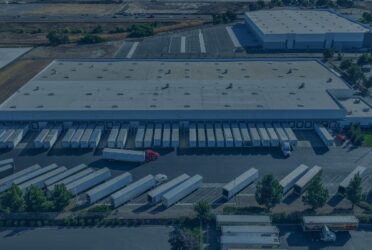
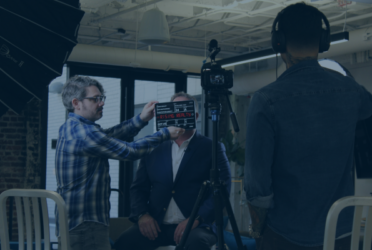
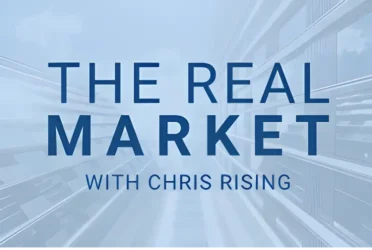 Podcast
Podcast